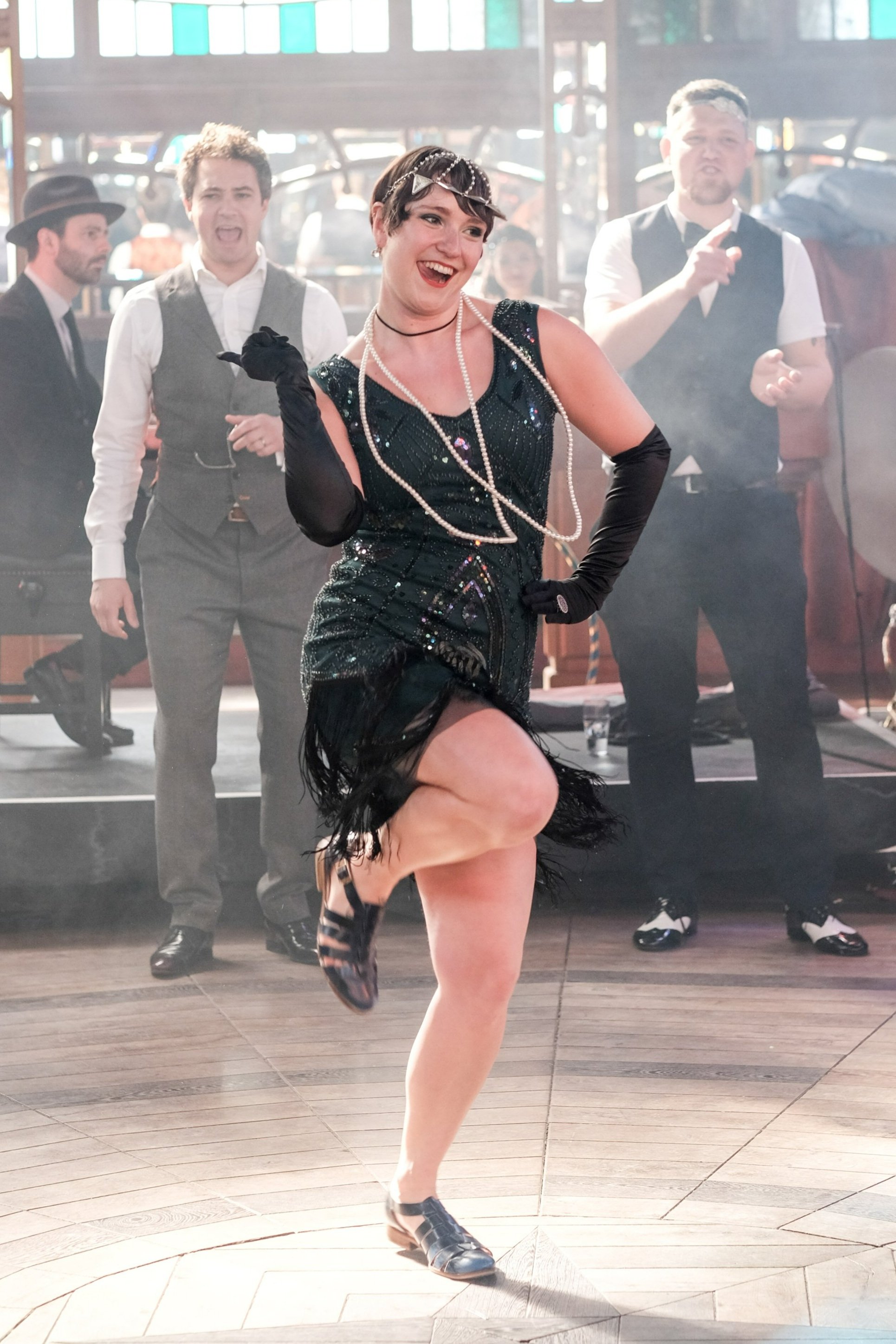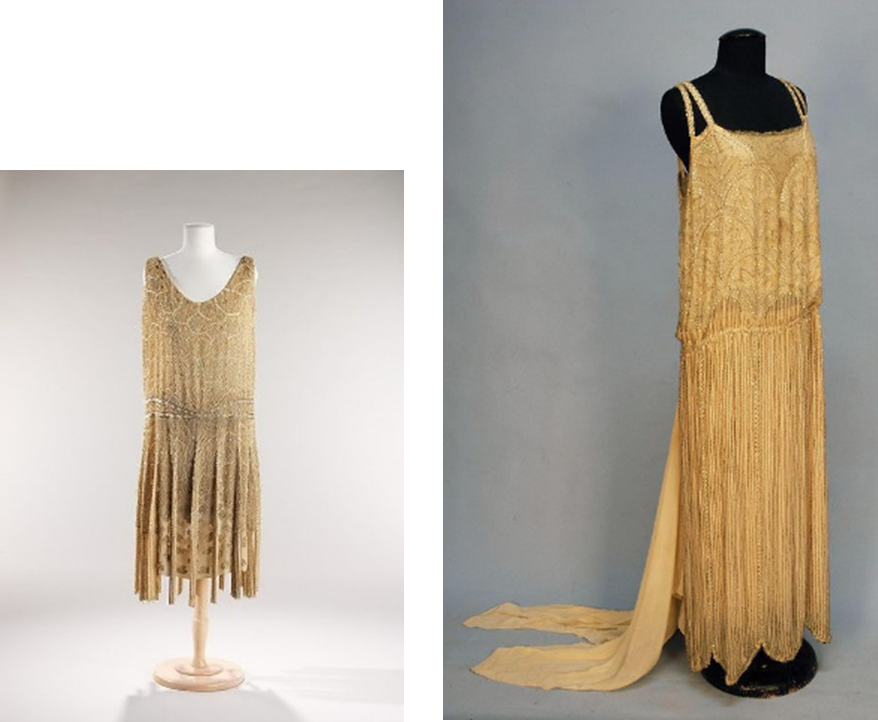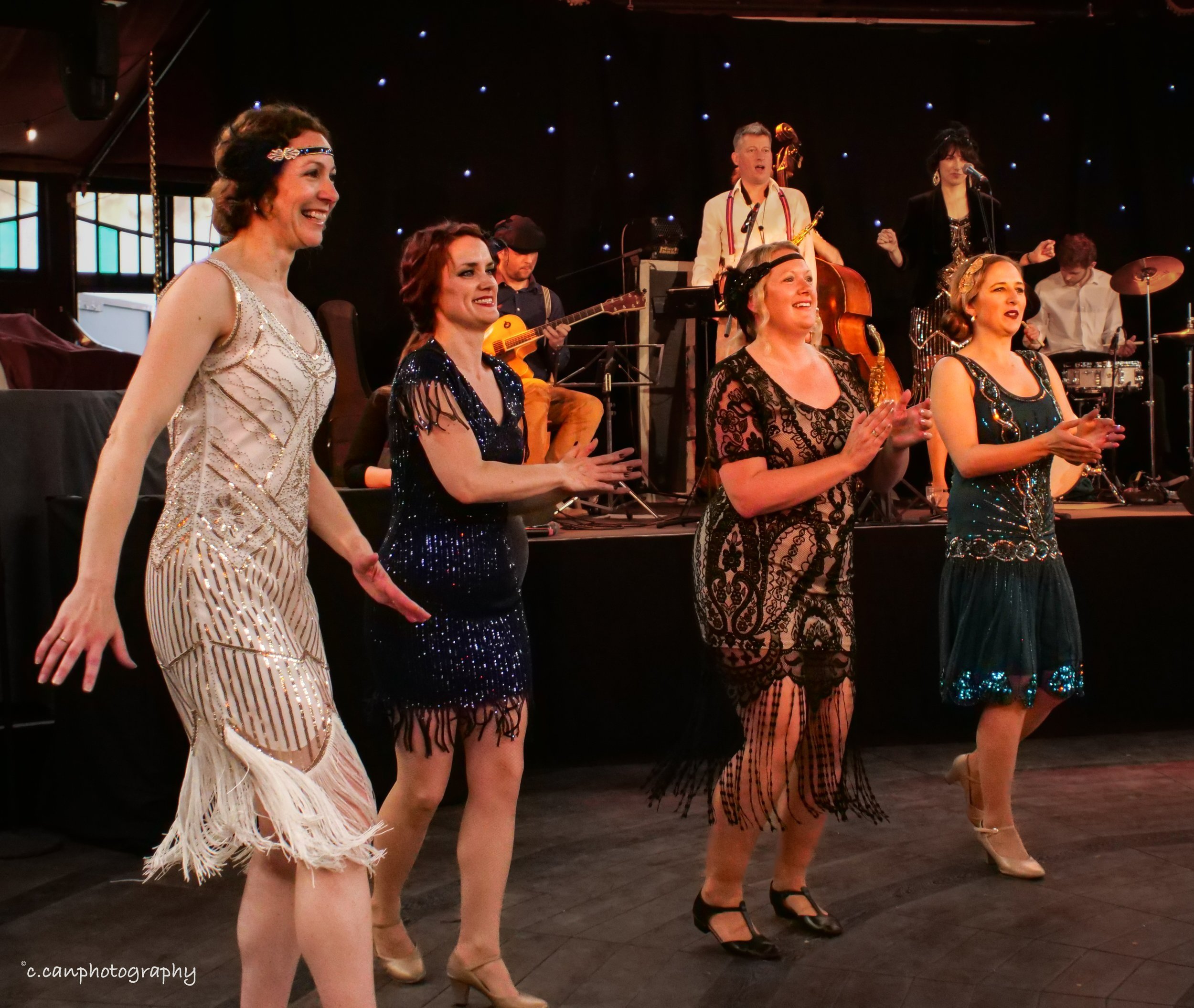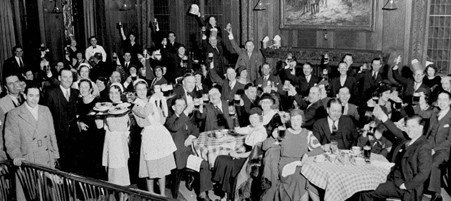
BLOG
Read about all things Charleston
The 20s Flapper Dress - The scandalous dress that empowered women
In the 1920s the flapper dress was a staple piece of clothing in every woman’s wardrobe. It enhanced their figures, allowing them to move freely to dance but those who wore it was also viewed as reckless partygoers…
There have been many iconic styles of fashion throughout the decades in history. We have all heard of Dame Barbara ‘Mary Quant’ and her 1966 creation of the mini skirt and Regency Ballgowns from Jane Austen’s novels. However, there is one piece of clothing that often gets forgotten about amidst the millions of other styles. An outfit so revolutionary it went down in history and became a staple piece in every woman’s wardrobe for over 10 years.
Yes, you guessed it! We can be talking about none other than the 1920s Flapper Dress…
As we are returning once again to the ‘20s, fashion from the decade has made quite the come back with more and more people falling in love with the whole style and vibe. So, let’s find out why this dress is so iconic…
What is a Flapper Dress and why is it widely recognised?
During the turn of the century, fashion was changing as women were gradually moving away from the suffocating corsets and stiff, long skirting in favour of a style which enhanced their figures as opposed to restricting them. The Flapper Dress ignited this change as it is relatively simple in terms of style and came to just below the knee in length (scandalously short for the time).
The silhouette in the 1920s was known as, ‘la garçonne’ which illustrated the youthful figure which was desired by many women throughout the ‘20s. Suddenly, women’s fashion was not about maintaining high levels of, ‘modesty’ and instead it became about empowering women to take control and physically break free from the societal constraints and pressures to conform to the rules of the ‘traditional woman’ in an attempt to abolish the idea that they should dress for their husbands.
The Development of The Flapper Dress Throughout the Decade:
Dressing up was once a restrictive activity and one that richer women in society were permitted to participate in. This was due to the overly expensive and Avant Garde embellishments that were added to many outfits and accessories. However, the 1920s made the act of dressing up more accessible as the Flapper Dress could easily be made at home, thanks to its simple structure and the eradication of the corset.
During the early years of the 1920s, the concept of the ‘Flapper Dress’ was beginning to form. This led to women being viewed as reckless as they drank, smoked, and danced the decade away. With waistlines dropping below the hip and hemlines slowly creeping up to above the knee, by 1925, the previous Victorian style of dress had been forgotten about and short, simple Flapper Dresses were the new, notable look. However, by the end of the decade, the idea of shorter hemlines crashed, as did Wall Street, and the fashion industry decided to return to the glamorous and curvaceous silhouette in the early 1930s.
What makes a Flapper dress
There are many specific characteristics that define a Flapper Dress and make it so recognisable- even today! They generally hang straight down the body with an uneven split hem, were sleeveless and most importantly were made out of light, loose fabrics. This not only allowed for dances such as The Charleston to be danced with ease, but it also revitalised body confidence in women.
For added pizzazz and glamour, many adorned their dresses with beading or sequins sewn into intricate designs as well as wore accessories such as pearls, feathers, and facemasks.
Famous Flapper Dresses
Like many other vintage eras throughout history, the 1920s was no different when it came to showcasing the iconic fashion that was prevalent during this time. The well-known designer Edward Molyneux was among the many to create a dress so ‘flapper-tastic’ that it went down as one of the most iconic in history. Molyneux was an extremely prestigious fashion designer throughout the decade. He created many elegant evening-wear Flapper Dresses that became a popular choice in elite social circles, even becoming first choice with many actresses and stage performers; including Greta Garbo. His imaginative creations were among the first to incorporate unconventional patterns using crystals or beading as well as experimenting with ostrich feathers and comically shaped buttons. His extravagant designs led him to open multiple fashion houses throughout Paris where he became a style trendsetter.
One of his most famous pieces of work was a 1925 Flapper Dress which perfectly encapsulated what the 1920s was all about. The dress symbolised glamour yet was minimalistic in terms of style. This particular dress became a statement piece and was used to set an example to this new, growing fashion trend.
Flapper Dresses in the Modern Day
The Flapper Dress is a style that is still very much associated with the 1920s, however, that hasn’t stopped it regaining popularity 100 years on. This style of dress has become a common choice for vintage fashion collectors and as a result, these dresses are now considered an ‘investment fashion piece.’
They have also become the fancy-dress must-have when throwing a vintage themed party.
Over the years, MyCharleston have also seen and worn some stunning 1920s outfits at our annual Speakeasy. Ranging from full blown Flapper to Swing Dresses; there really are so many amazing styles that stem from the 1920s.
With all the tassels, sequins, beading and pearls, I think it’s safe to say that the legacy of the Flapper Dress still lives on and will hopefully continue to do so. After all, this historical style of dress is certainly one of a kind…
By Eleanor O'Donnell
History of the 1920s Speakeasies
Find out about the secret 1920s Speakeasies of America including how they allowed people from different backgrounds to socialize together and how they gave newfound freedom to women.
Just over 100 years ago, the birth of the ‘Jazz Age’ occurred and secret Speakeasies were beginning to pop-up all-over America. Upon entrance, you would be greeted with the sound of laughing, the clinking of drinks and most importantly Jazz. This new way of life allowed for social interactions to occur between people of different race, ethnicity, gender and socioeconomic statuses and without them, we may not have gotten where we are today in terms of integration.
What is a Speakeasy and why were they created?
Throughout the early years of the 20th Century, America was in turmoil in terms of political and social reform with more and more people rebelling against the traditional ways of life which stemmed from the Victorian times. At the beginning of the decade known as the ‘Roaring Twenties’ the United States of America had just entered the Prohibition era where liquor and other alcoholic beverages were illegal between the years of 1920 and 1933. This resulted in the formation of illicit Speakeasies and at one point, there were thought to be over 100,000 Speakeasies in New York alone.
The phrase, ‘Speakeasy’ originates from a term that bartenders used where people needed to, “speak easy” (quietly), when ordering at the bar in order to not draw attention to the prohibited act of buying alcohol. In order to gain access to these illicit bars, a password, specific handshake or secret knock was required. Furthermore, slang words for alcohol such as ‘coffin varnish,’ ‘monkey rum’ and ‘tarantula juice’ were created to fool police and neighbours.
As well as the term, ‘Speakeasy’, these illegal taverns were also called “Blind Pigs” or “Gin Joints” and were often set up by crime members such as the infamous Al Capone. The venues ranged from Jazz clubs with dancefloors to dark backrooms, basements and a new Prohibition-created venue: The House Party.
Due to the fact that alcohol was illegal, organisers of such events had to come up with inventive ways to transport and store the goods. Many Speakeasies operated under the guise of being a pharmacy and claimed alcohol was being sold for, “medicinal purposes.” Others used false books, coconut shells, garden hoses and even prams with their babies perched on top to transport the illegal liquor from one event to another.
1920s Prohibition Speakeasy
The Significance of Speakeasies for Women
Before World War I finished in 1918, women and young girls were expected to uphold traditional Victorian values in terms of the way they dressed, spoke and behaved in public and within the home. However, just six months after the Prohibition law came into force in 1920, women got the right to vote which was a long-awaited pivotal moment and gave them autonomy over the way they expressed themselves.
Prior to the setup of Speakeasies and this new way of life, women would have had no place in bars unless they were a showgirl; yet now exposed to this easy access, social and liberal change were in full swing in the “Jazz Age.” With their short skirts, bobbed hair and the sudden ability to drink copious amounts of cocktails, the concept of the ‘Flapper’ was born. The gender gap was practically non-existent within these social events as men and women drank, danced and smoked together, which was something America had never seen before and put Jazz Music to blame for the ‘immorality’ this newfound freedom gave women.
1920s Flapper Girls
How did the Charleston play a part in Speakeasies?
The Charleston first became popular in America and was enjoyed by many young people throughout the 1920s and was danced to ragtime Jazz music which quickly became a craze all over the world. The Charleston became particularly popular with rebellious young women, known as ‘Flappers’ and the dance was a physical representation of how young people (girls in particular) wanted to express themselves.
Speakeasies played an integral role in keeping The Charleston dance culture alive because it was banned in regular bars, clubs and dance halls as it was deemed too scandalous and exuberant..
Charleston Dancing at a Speakeasy in Harlem 1920
If you want to find out more about what a Speakeasy would look like now, 100 years on, then check out MyCharleston’s blog MyCharleston Speakeasy 2021
If you fancy giveing the Charleston dance ago, take a look at our in-studio and online courses.
By Eleanor O’Donnell









